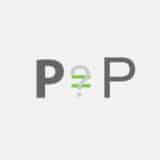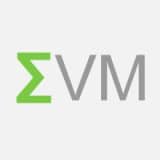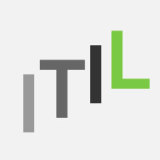Project Communication Management: Push vs Pull Communication for PMP Exam

In Project Communication Management, the Project Manager is responsible for communicating matters related to the project to all the related project stakeholders based on the Project Communication Plan by using various communication methods, namely Push Communication, Pull Communication and Interactive Communication. Of these three communication methods, Pull and Push Communication methods are often confused by fellow Aspirants.
Article Highlights
Push Communication vs Pull Communication
- Push Communication: Uni-directional communication sent from sender to receiver.
- Push Communication is recommended if the project manager just want to disseminate information without any needs to obtain immediate feedback from recipient.
- The message/information conveyed through push communication is usually in written form and should not be urgent nor sensitive/classified.
- Advantages:
- Easy to disseminate message/information to a large pool of recipients in a short while
- Disadvantages:
- Not face-to-face
- Not easy to verify that the messages have been conveyed successfully and the recipients understand them correctly
- Not suitable for urgent matters
- Examples of Push Communication
- Letters
- Memos
- Emails
- Reports
- Voice mails
- Pull Communication: Uni-directional communication by providing all related stakeholders access to certain information.
- All related stakeholders can gain access to (pull) the information provided anytime they need/want.
- Pull Communication is only suitable for information dissemination that is not urgent nor critical — if the intended recipients do not read the information, little or no effect on the project would be resulted.
- Advantages:
- Easy to disseminate message/information to even a much larger pool of recipients in a short while
- Information can be retrieved whenever needed
- Disadvantages:
- Not face-to-face
- Not suitable for urgent / sensitive matters
- Not easy to track if all the recipients have accessed the information
- Examples of Pull Communication
- websites
- wiki / knowledge repositories
- bulletin board (e-bulletin board)
- dashboard
In addition to Push Communication and Pull Communication, there exists a more efficient communication method — Interactive Communication.
- Interactive Communication: Bi-directional communication by communicating in real time.
- The most efficient method of communication as interactive communication can ensure all stakeholders understand the message / information correctly.
- Advantages:
- Can check if the recipients understand the message/information delivered.
- Allow the recipients to have their queries/doubts answered immediately.
- The project manager can collect direct feedback from the recipients to understand their reception/thoughts.
- Suitable for sensitive / classified information.
- Disadvantages:
- Time-consuming
- In order to remain effective, interactive communication is more suitable for a smaller group of participants
- Examples of Interactive Communication
- Meetings
- Phone Calls / Conference
- Video Calls / Conference
- Workshops
Mock Exam Question
- The project manager, Steve, is currently updating the project wiki to include the latest data gathered from a project process as a mean to disseminate the most updated information of the project to project team members and stakeholders. What type of communication method does he use?
- Static Communication
- Push Communication
- Pull Communication
- Interactive Communication
Solution: C
As project team members and stakeholders need to log on the project wiki in order to view the most updated information for the project, the project manager is using “Pull Communication” method for this type of project update notice.
Summary
The Project Manager would need to choose the best form of communication methods based on the nature of the message / information:
- Push Communication: sends the message from sender to recipients; for non-urgent / non-sensitive matters with a large pool of recipients when urgent feedback is NOT needed
- Pull Communication: provides a place to get the information any time; for non-urgent / non-sensitive matters with a large pool of recipients when feedback is NOT expected
- Interactive Communication: allows immediate feedback; for sensitive / urgent / difficult matters
 Additional FREE PMP resources: 47+ Commonly Confused Term Pairs with detailed explanations. If you found this article useful, you may wish to reference other Commonly Confused Term articles.
Additional FREE PMP resources: 47+ Commonly Confused Term Pairs with detailed explanations. If you found this article useful, you may wish to reference other Commonly Confused Term articles.Most Popular PMP Certification Exam Articles
- My Exam Prep Tips and Free Resources (I got 4P and 1 MP)
- How to Get 35 Contact Hours Fast and Easy?
- Detailed Comparision of online PMP Courses
- Over 1000+ FREE Quality Mock Exam / Practice Questions
- A FREE Guide to Formulas and Calculation (with explanation and sample questions)
- 47 Commonly Confused Terms with detailed explanation




 Hi, my name is Edward Chung, PMP, PMI-ACP®, ITIL® Foundation. Like most of us, I am a working professional pursuing career advancements through Certifications. As I am having a full-time job and a family with 3 kids, I need to pursue professional certifications in the most effective way (i.e. with the least amount of time). I share my exam tips here in the hope of helping fellow Certification aspirants!
Hi, my name is Edward Chung, PMP, PMI-ACP®, ITIL® Foundation. Like most of us, I am a working professional pursuing career advancements through Certifications. As I am having a full-time job and a family with 3 kids, I need to pursue professional certifications in the most effective way (i.e. with the least amount of time). I share my exam tips here in the hope of helping fellow Certification aspirants!






Hi Edward,
I am preparing for PMP exam. I have already done 5 tests with 200 questions (scoring was: 1.test-75,5%, 2.test-80,5%, 3.test-83,5%, 4.test-70%, 5 test -71%). Actually I am not sure if I am ready for real exam or not. In last two tests I have problem that I did have enough time to answer 20q ). Thank you for your advice.
Actually, you did quite well. The only thing you need to work on is time management. I am sure you can handle the questions pretty well. Can’t wait to hear your good news!
Hi Edward, first of all I would like to congratulate you for your initiative to share those valuable information for those whom are intended to get the PMP certification.
I have a point which I would like to ask for your evaluation. Looking into the PMBOK 6th Edition, I have observed which there are a different explanation about the push communication method.
You wrote that: Push Communication: sends the message from sender to recipients; for non-urgent / non-sensitive matters with a large pool of recipients when urgent feedback is NOT needed.
Into the PMBOK 6th, in the page 374, is written: Push communication: Sent or distributed directly to specific recipients who need to receive the information.
My understanding is that for a large number of participants, should be used the Pull method, for a smaller group of specific recipients (uni-directional communication) should be used the Push method, and for an Interactive communication should be used the Interactive method.
Could you please evaluate it and give your point of view ?
Thank you in advance.
Yes, you are right! Interactive communication is required in case of urgent matters. Wish you PMP success!
Can you please have short notes on formal and informal communication types. sometime when it comes to mock questions I get confuse to chose the answers. I have the basic understanding of these terms. but when it come to exam point I am confused.
Sure,
– examples of formal communication: report, presentation, meeting, plans, etc.
– examples of informal communication: email, conversation, brainstorming, instant messaging, texting, etc.
Wish you PMP success!